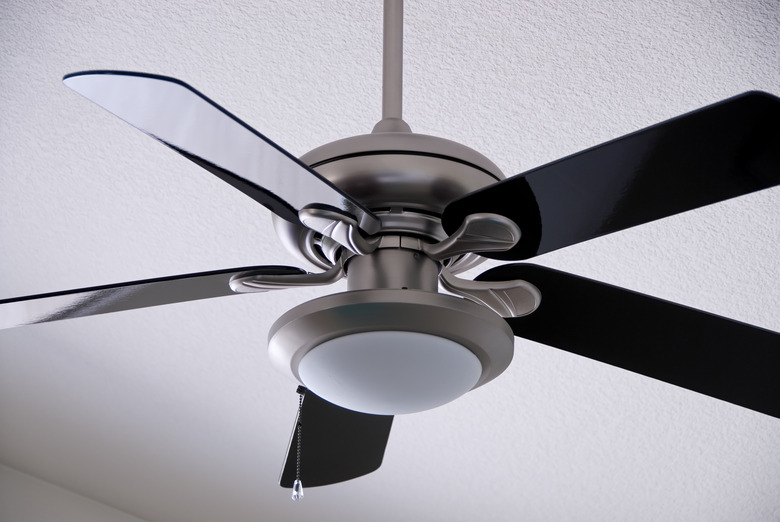How To Control A Motor Speed With A Dimmer Switch
Ambiance is never overrated. A dimmer switch can add warmth and comfort to any room that has an overhead fan and/or light fixture. It can control the rate at which the fan blades spin season after season and control the amount of light in the room. There are many factors to consider when installing a dimmer switch to control motor speed.
Dimmer Switch for Fan Speed
Dimmer Switch for Fan Speed
The best dimmers for running an electric motor have an adjustable minimum speed setting. The power switch should match the specifications for the motor for best results. On the hub cover of the ceiling fan there will be a list of the amps and the watts that the appliance will use at maximum power consumption. If the measure of watts is not included, multiply the number of amps by 120 to find the watts number. Always buy a switch that is rated to handle an equal amount for the watts or more, not less, in order for the dimmer switch to work well. A dimmer motor AC switch is suitable for a ceiling fan.
Installing a Dimmer Switch
Installing a Dimmer Switch
At the breaker, shut off the power that supplies the ceiling fan. If the circuit for the fan isn't easy to figure out, just shut off the main power breaker switch while you work on the fixture to avoid any shocks or other serious safety issues. Pop off the toggle switch that controls the motor and loosen the screws that hold the cover plate to the wall switch that controls the ceiling fan. Carefully put out the switch from the wall box and examine the wire terminals for damage, fraying or other wear and tear. Replace these wires if needed before going further in the process.
The two hot wires are connected to the brass-colored terminal screws that are on the side of the switch. The hot wires can be either black or black and blue. A bare copper ground wire, which can also be green, is on the lower side of the switch and is attached to a green terminal screw. At the back of the wall box are two white neutral wires that are connected to a wire nut. Loosen the wires by gently unscrewing them from the box. The neutral wires should be loosed from the wire nut that connects them to the box. If it is stubborn, use a pair of pliers to get it off the box. Throw this nut away once it is completely removed. Connect the wires from the dimmer switch to the correlating wires in the wall box. Start with the hot wires. Twist the bare wire ends together and attach new wire nuts to all of the wires.
Dimmer Switch for Motor Speed Control
Dimmer Switch for Motor Speed Control
Double check each connection before setting the minimum speed control. Set the ceiling fan at the slowest speed that the motor can rotate. This will be needed when paired with the heating system. Replace the wall box and plate to its position in the wall when the speed is where you want it to be for minimum and maximum levels.
A dimmer can't control a lot of fixtures, or it will overload its maximum wattage. For instance, if a dimmer is equipped for 500 watts and has to control up to six lights at 100 watts each, it can overload the system. If anything, it will be working overtime, which can cut down its lifespan significantly. To keep the dimmer switch working well, only use appropriate wattages. If the fixture requires less than four watts or more than 600 watts, then a dimmer switch may not be the best option.
